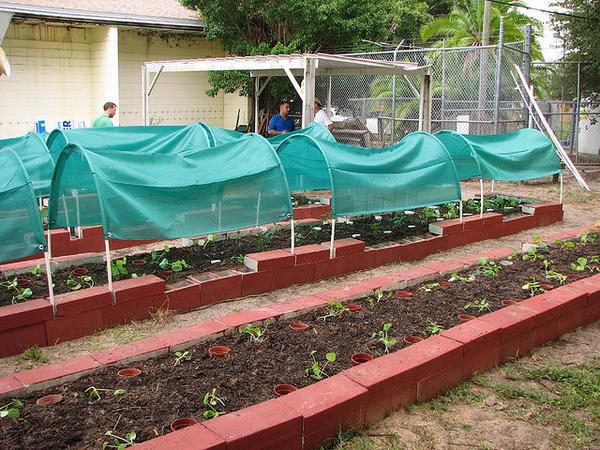Advertisement
Lessons of Lead in Local Urban Gardens: Raised Beds Not Enough

So what to do? Widespread wisdom holds that it's enough to build a raised bed, with pristine topsoil. But researchers from Wellesley college are reporting at a meeting of the Geological Society of America in Denver that judging by some mysterious contamination found in Dorchester and Roxbury, raising beds may not be good enough, because the soil in them soon measures high in lead again. (The abstract is here.)
Let me jump ahead to the solution: clear away the top couple of inches of soil every year.
Now more on the problem, as described by the Geological Society:
"Raised beds are surrounded by a sea of contaminated soil," said Daniel Brabander of Wellesley College. Brabander, his students and colleagues have been studying the lead in 144 backyard gardens in coordination with The Food Project, an organization committed to food security, nutrition and sustainable urban agriculture. Eighty-one percent of the gardens they studied were found to have lead levels above the U.S. EPA limits of 400 micrograms of lead per gram (µg/g) of soil.
To solve that problem, raised wooden beds with freshly composted soil were installed in backyard and community gardens by the Food Project. But the researchers have found that the soil in raised beds that starts with as little as 110 micrograms of lead per gram of soil rose to an average of 336 µg/g of lead in just four years.
Lead contamination in most cities comes from primarily two sources: leaded gasoline and lead paint. Although both sources have been banned, plenty of that lead remains in urban soils all around the raised bed gardens. Roxbury and Dorchester soils have a lot of lead, but they are not unique."On the East Coast, where cities are a bit older, it's more of a problem," said Brabander. And even within a city the lead contamination can vary significantly, he said, depending on historical traffic patterns and even such very local effects like a house containing lead paint burning down on a lot that is later used for gardening.
The main suspects in transporting lead into raised beds are wind and perhaps rain, which splatters the ground and can potentially throw fine particles of contaminated soil into the raised beds.
This program aired on November 2, 2010. The audio for this program is not available.
